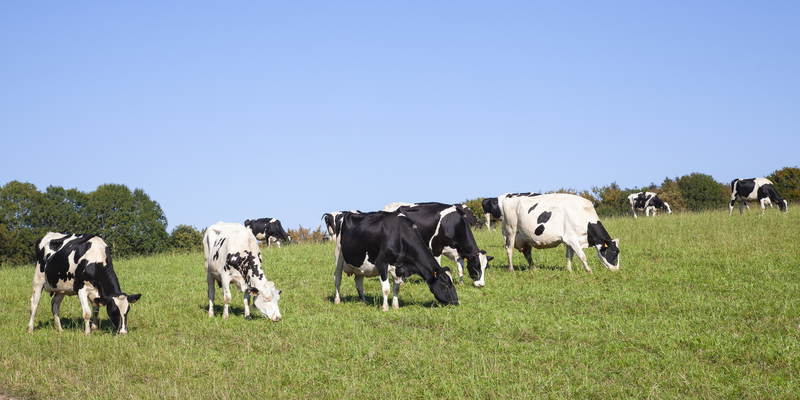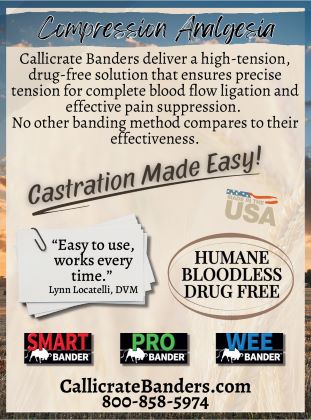Key Considerations When Purchasing a Cattle Trimming Chute

Spring showers are a blessing for the pasture and the crops, especially after a dry fall. We often need the rain, however, it comes with its own problems. Cool and wet conditions for long periods of time are hard on cattle hoofs. It promotes an environment where bacteria can thrive, hoofs soften, a combination that can quickly get out of hand and put a cow down. The vast majority of lameness in cattle begins with the feet and hoofs. We see that cut directly into our profits, the well-being of the herd, and the health and welfare of the cattle. What begins in the feet can lead to lameness, open cows, reduced milk production, and eventually to culling.
Maintaining a healthy herd requires diligent attention to their well-being, particularly their foot health, and proactive measures are key to preventing lameness, which can lead to culling of the cow. Start by regularly looking over your cattle, ideally daily or at least weekly, look for signs of foot problems such as foot rot (indicated by swelling, redness, and a foul odor), bruises, abscesses (revealed by swelling, heat, or favoring a foot), and laminitis (showing as reluctance to move or a “rocking horse” stance). This allows for early detection and more effective treatment.
If you don’t already have a regular schedule for hoof trimming, now is a good time to start that. Applying proper hoof trimming using a trimming chute is essential for maintaining healthy hoof balance and preventing issues. Furthermore, being mindful of environmental factors that can contribute to foot injuries, such as roughhousing on concrete or aggressive herding, is important. This can lead to cracks, which give bacteria an opportunity to enter the foot. In dairy settings, overcrowding and extended time on concrete can increase the risk of sole ulcers, sole abscesses, laminitis, and sole hemorrhaging, often requiring the use of orthopedic blocks for treatment. By prioritizing checking your cattle daily and being ready to address issues, you can greatly minimize lameness in your herd, leading to healthier and more productive cows.
Invest in the Right Equipment
One of the best tools you can have is a well-built and reliable trimming chute. This can save you time, money, and cattle in the long run. In today’s dairies, ensuring the health and welfare of livestock is our number one priority. The trimming chute stands out as one of the most beneficial specialized pieces of equipment. Today’s chutes are designed with precision, and many have robust restraint devices, enabling handlers to safely tend to individual animals for hoof inspection and treatment. The trimming chute is, without a doubt, a crucial investment in maintaining the health and productivity of any cattle herd
Keep Safety in Mind
At its core, a trimming chute need to be designed to securely and safely hold cattle, whether in a standing or tilted position. When dealing with cattle, especially if they’re injured or not feeling well, it’s vital that you keep safety first in mind; they’re likely to be more agitated and defensive. The controlled restraints are not merely for convenience, but rather a safety measure, keeping both the animal from potential injury due to sudden movements and the worker safe from kicks or unexpected shifts in weight.
Additionally, leg restraints, often utilizing ropes or straps connected to winches, are employed to lift and secure each leg individually, presenting the hooves for trimming. Advanced models may use hydraulic or pneumatic lifts for this purpose. In some designs, belly bands provide additional support too. Make sure the chutes prioritize access to all four hooves. You will notice the design should allow unobstructed access and might have leg winches, lifting mechanisms, and adjustable side panels that allow for precise positioning of the limbs. A well-designed trimming chute goes beyond mere restraint; it actively incorporates safety features. You will notice smooth edges to prevent cuts and potential for further injury.
Versatility
Recognizing the diverse needs of dairy operations, trimming chutes are being designed for multiple uses. Basic models are reliable and a good fit for smaller herds or less frequent use, but you will have to put in a little more labor. Base models are a good place to start. You will not have some of the upper-end features, but you will be able to safely get the job done. Some of the more sophisticated hydraulic or electric versions streamline the process for larger operations. They reduce the labor and often allow for quicker and easier manipulation of the cow. From basic models to advanced hydraulic trimming chutes, selecting the right equipment is crucial for effective cattle hoof care. Consider the features and benefits of different trimming chute options and make the best decision to protect dairy’s well-being. Some advanced chutes even come equipped to aid in procedures, such as pregnancy testing.
You should also figure out if you need a portable unit or if you need to be able to move it from farm to farm. Some chutes are stationary, intended for use in dedicated handling areas, while portable units offer flexibility for use across different pastures or farms. If you are considering starting a trimming business, you might consider a portable unit that you can take to other dairies.
When it comes to getting the cow up to the chute, there are several different options. You can customize your set-up, of course. Or you might look at creating an alleyway or holding pen. For added stability, some chutes have adjustable side panels that can be gently squeezed to limit body movement. We spoke with Myron Wigness, who heads up the sales designing services Hi-Hog Farm & Ranch Equipment, about some tips to look for when it comes to a trimming chute.
He explains the design Hi-Hog has created; Hi-Hog keeps the cow in the middle of the corral. “[Handlers] have good access to both sides of the animal, from top to bottom. Having the cow in the center of that pen with the self-catch head gate and the split panels is the same as what we call our calving trimming chute. It’s got a self-catch head gate, and both sides swing split panels swing out, just like they do in the calving pen. That’s a very popular item in vet clinics because of the complete access to both sides of the animal.”
As you can see, manufacturers have specialized and customized trimming chutes to do so much more than just trim hoofs. It can be your best friend when it comes to performing assessments, treatments, and regular vet work on your cattle. Just figure out what you need, what you want, and go from there. I guarantee you will find a trimming chute that meets your needs.
Today’s chutes prioritize safety for both the animals and the handlers and reduce the risk of injury during what can otherwise be a potentially dangerous situation. Ensure the best cattle hoof health and prevent lameness with the right cattle trimming chute. They will help you save cattle and should increase efficiency, making the trimming process faster and more manageable. This is crucial when dealing with both large and small diaries, allowing for effective hoof trimming. Finally, trimming chutes can allow you to reduce the labor needed to work on a cow. The trimming chute is more than just a piece of equipment; it is a cornerstone of modern dairies. They play a vital role in maintaining the health, well-being, and productivity of cattle herds, ultimately benefiting both the animals and the producers who care for them.
Article by Jessica Graham
American Dairymen Magazine https://americandairymen.com/



